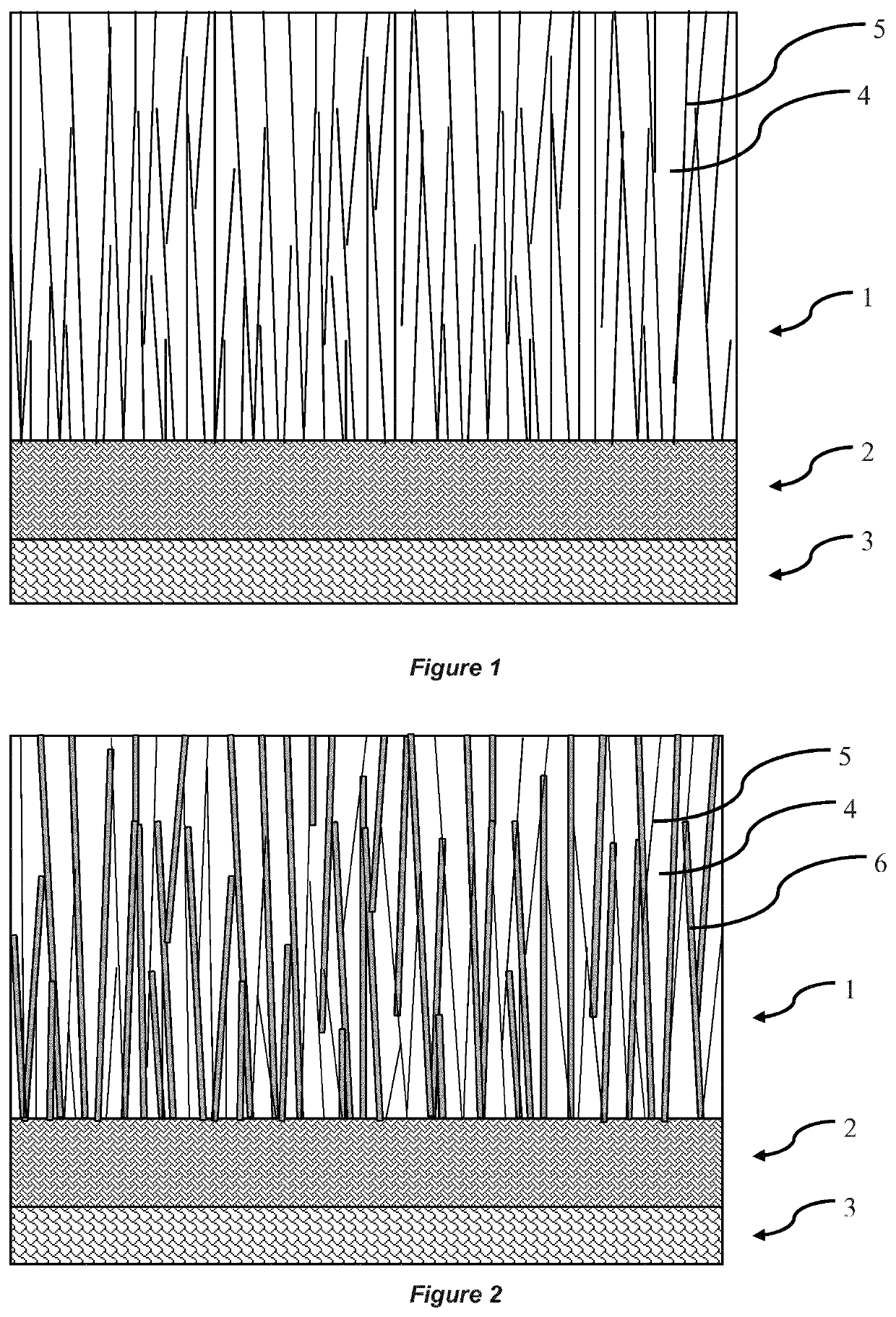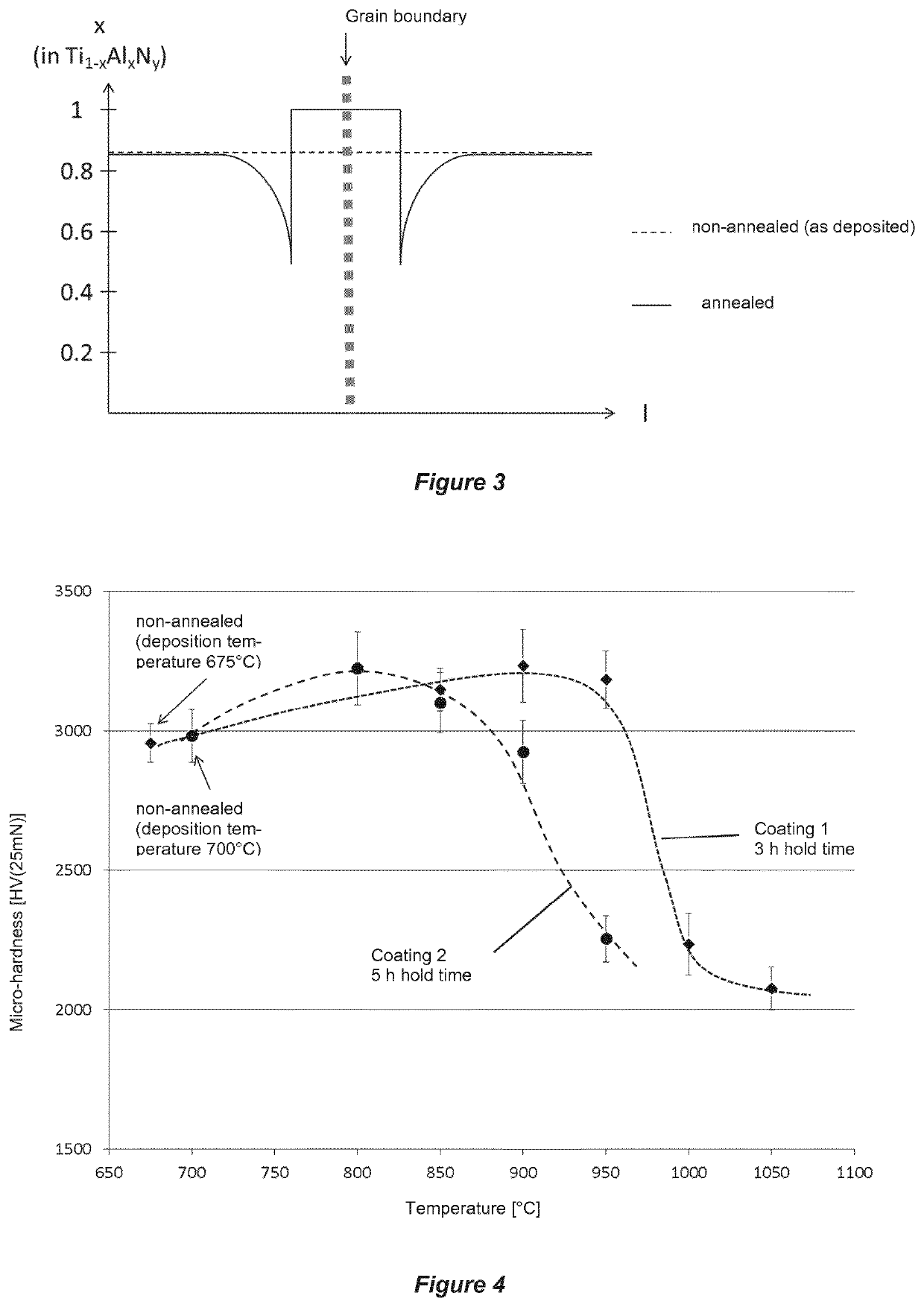Tool with TiAIN coating
a technology of tiain coating and tool, which is applied in the direction of superimposed coating process, manufacturing tools, turning machine accessories, etc., can solve the problems of cracks, cracks, wear resistance of tools, adhesion problems, etc., to reduce residual tensile stresses, and increase residual compressive stresses
- Summary
- Abstract
- Description
- Claims
- Application Information
AI Technical Summary
Benefits of technology
Problems solved by technology
Method used
Image
Examples
example 1
on of Coated Cemented Carbide Indexable Cutting Inserts and Analysis
[0084]As substrate bodies in these examples cemented carbide indexable cutting inserts of the geometry SEHW1204AFN having a composition of 90.5 wt-% WC, 8 wt-% Co and 1.5 wt-% (NbC+TaC) were used.
[0085]For the coating of the cemented carbide indexable cutting inserts a CVD coating reactor of the type Bernex BPX325S with a reactor height of 1250 mm, a reactor diameter of 325 mm and a volume of the charge arrangement of 40 liters was used. The gas flow was radially with respect to the longitudinal axis of the reactor.
[0086]For the adhesion of the inventive Ti1-xAlxCyNz layer, as well as of the comparative layers, immediately on the cemented carbide substrate there was first deposited an about 0.3 μm thick TiN layer by CVD under the deposition conditions indicated in table 1:
[0087]
TABLE 1Reaction conditions for the preparation of the adhesion layerReaction gasAdhesionTemp.PressureTimemixture [vol-%]Layer[° C.][kPA][min...
example 2
ests
[0097]Using the cemented carbide indexable cutting inserts prepared in example 1 (inventive examples Nos. 8 and 9, and comparative examples Nos. 7, 10 and 11) milling operations were carried out under the following cutting conditions:
[0098]Work piece material: cast iron GG25
[0099]Parallel feed, no coolant used
[0100]Feed per tooth: fz=0.2 mm
[0101]Depth of cut: ap=3 mm
[0102]Cutting speed: vc=283 m / min
[0103]Setting angle: κ=45°
[0104]Milling width: ae=98 mm
[0105]Projection length: ue=5 mm
[0106]The comb crack formation (FIG. 5), the maximum flank wear VB,max (FIG. 6) and the average flank wear VB (FIG. 7) of the tools was determined at the main cutting edge after a milling distance of 800 mm, 1600 mm, 2400 mm, 3200 mm, 4000 mm and 4800 mm, respectively. The results are shown in FIGS. 5, 6 and 7.
PUM
| Property | Measurement | Unit |
|---|---|---|
| thickness | aaaaa | aaaaa |
| thickness | aaaaa | aaaaa |
| Vickers hardness | aaaaa | aaaaa |
Abstract
Description
Claims
Application Information
 Login to View More
Login to View More - R&D
- Intellectual Property
- Life Sciences
- Materials
- Tech Scout
- Unparalleled Data Quality
- Higher Quality Content
- 60% Fewer Hallucinations
Browse by: Latest US Patents, China's latest patents, Technical Efficacy Thesaurus, Application Domain, Technology Topic, Popular Technical Reports.
© 2025 PatSnap. All rights reserved.Legal|Privacy policy|Modern Slavery Act Transparency Statement|Sitemap|About US| Contact US: help@patsnap.com



